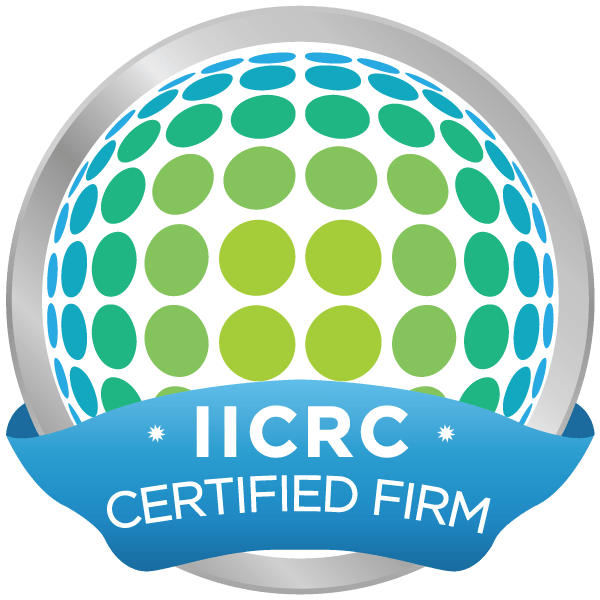Water service lines can become damaged from tree roots, clogs and general wear and tear. Arkansas offers lower repair costs than many other states nationwide, by about 10%.
Minor clean water damage may be managed at home by the homeowner themselves; however, any gray and black water issues should be left to professionals as they pose health hazards and must be eliminated immediately.
Class 1 Damage
Cost to repair water damage depends on its extent and source, with three distinct classes defined by source, rate of evaporation, and absorption by IICRC categories that provide better communication between insurers and contractors, saving homeowners time and money when dealing with restoration costs.
Class 1 damage, the least severe form of water damage, typically results from sources such as broken pipes, home appliances or even rainwater. Clean-up for this form of damage is minimal compared to more serious situations; costs for fixing this kind of damage could even fall as low as $140 per room!
Class 2 damage occurs when water has reached within 24 inches of the surface and caused severe effects to materials such as walls, ceilings, carpeting, insulation and sub flooring. Furthermore, moisture often comes from above requiring extensive clean up which often includes replacing materials as well as the removal of fixtures requiring professional help and potentially expensive solutions.
Black water can be hazardous to humans due to contamination from raw sewage, chemicals, or other potentially toxic sources. When this situation arises, immediate action must be taken and usually requires professional water damage restoration services.
Install an automatic water shut off system as another way of cutting costs and saving thousands in repairs. Speak with local plumbing companies about these devices and have one installed right away.
Class 2 Damage in Little Rock Arkansas
Water damage costs vary significantly based on its type and class, with estimates often fluctuating by class based on how quickly water evaporates off materials that have been affected by it; for instance, bathroom leaks that only impact small areas of carpet will cost much less to fix than flooding basements. Class also dictates which materials need replacement which has an impactful influence on restoration project costs overall.
Class 1 water damage is generally the least costly to remediate, typically involving minor dampness from leaky faucets or carpet leakage. While such minor water damage typically doesn’t cause structural damage or encourage mildew growth, left unchecked it may lead to mold growth that poses health concerns for homeowners. You can save money with this type of water damage by taking preventative steps such as switching off their main water supply when leaving home or installing an automatic shut-off system for their main line.
Gray water poses serious health risks and typically originates from appliances like dishwashers, washing machines or laundry tub leaks. Contaminated gray water typically contains detergents and food particles from laundry which makes it dirty – the average restoration cost per square foot averages between $4 to $7 per square foot.
Black water damage restoration can be the most hazardous and expensive form of restoration, often the result of flooding from hazardous sewage or river systems. Contaminated with chemicals or human waste, black water poses serious health risks when coming in contact with surfaces it touches; any objects it comes into contact with must be completely replaced due to this risk; repairs typically cost $7-$7.50 per square foot to restore this category of water damage damage.
Though most homeowners understand the significance of taking precautionary steps to mitigate their water damage risk, some individuals fail to heed warnings and act appropriately. Common examples include leaving their lawn sprinkler running without turnoff, altering property grading by creating floods through building an above-ground pool or altering grading, failing to maintain plumbing system regularly or failing to address plumbing leakage issues; all these problems could often be avoided with regular professional inspections and regular maintenance schedules.

Class 3 Damage in Garland County, Arkansas
Class 3 flooding affects an entire room or rooms and impacts materials such as carpeting, insulation and sub flooring, which may include carpet, insulation and sub flooring. It may have come from river flooding, storm surge or backup sewage and leads to mold growth as well as structural issues like mold rot or structural integrity issues that require professional remediation services to remove contaminated materials and restore them correctly. It could even involve replacing ceilings walls and other components – this process typically costs $20,000-100,000.
Professionals will be able to accurately distinguish the different forms of water damage, providing an accurate estimate for cleanup and repair costs. They can also help prevent future issues by installing an automatic water shut off device – the best way to safeguard against pipe bursts!
Though water damage may seem obvious to homeowners, its effects are often underestimated and underreported. This may be caused by several factors; among them are high-net-worth individuals assuming their expensive homes are less susceptible to water damage or have enough insurance coverage; the truth is that no matter your financial standing or wealth status you can never be completely immune from its risks.
Recent flooding is a reminder to all homeowners to learn what the costs associated with fixing water service lines will be, in order to make informed decisions and have enough coverage for repairs in case they arise. Being informed will allow you to compare quotes from multiple contractors as well as understand what questions to ask before making your choice. You should also regularly assess your insurance policy to make sure it has appropriate levels of coverage.
The cost of water damage can vary depending on a number of factors, including:
- The severity of the damage: The more severe the damage, the more expensive it will be to repair.
- The size of the affected area: The larger the affected area, the more expensive it will be to repair.
- The cost of repairs: The cost of repairs will vary depending on the type of damage and the materials that need to be replaced.
If you have experienced water damage in your home, it is important to contact a professional restoration company as soon as possible to assess the damage and begin the repair process. The sooner you take action, the less likely it is that the damage will become worse and the more likely it is that you will be able to recover the full value of your insurance claim.
Class 4 Damage
Arkansas flood damage could have long-lasting impacts on agricultural production both in Arkansas and nationwide. The 2019 Arkansas flood was the result of various climatological factors: an unusually mild winter combined with warmer than normal spring weather led to rapid snowmelt in the Rocky Mountains that inundated runoff streams into Arkansas River tributaries; heavy rain caused an upsurge in river levels, inundating low-lying farmland and urban areas; compounded with reduced prices for soybeans from China due to trade war; this caused many farmers unable to afford risking planting their new crops this time round – compounding all this chaos further as they could not afford their losses!
Floodwaters were caused by inadequate maintenance on dams that controlled the Arkansas River’s flow. With funds running short for reservoir maintenance, as it continued raining the Arkansas River Authority was unable to keep its reservoirs at a normal level and as rain intensified they overflowed, flooding several tributaries connected by it, including Mansard Creek in Sebastian County, Palmar Creek in Faulkner County and Fourche Creek in Little Rock – each fed directly by it and in turn becoming inundated causing widespread flooding across northwest Arkansas.
When your home or commercial building becomes flooded, it’s essential that the property owner understands the various categories of damage categorized by IICRC professionals. This is especially true for homeowners insurance purposes as categorization will often determine how much it costs to clean up and repair.
Professionals begin by determining where the water source comes from and its purity before assessing how extensive the damage is and the costs involved to restore structures to their pre-loss state.
Class 1 damage is considered clean since its source is potable water, such as from a burst pipe or toilet overflow. While cleaning up class 1 damage tends to cost less than other classes, drying typically costs between $1 and $11 per square foot depending on what material needs drying.








